Heres Some Camping Tips & Tricks at Your Fingertips
Our Kiefer Campground Blog is the information you need to make your next camping trip even more enjoyable. From RV and camping tips and tricks, to amazing campfire recipes, to advice on planning your next trip... the information below is here to help you. And please, feel free to comment and share your experiences, knowledge and favorite recipes. At Kiefer Campground, we are a family and all here to help each other enjoy the great outdoors to the fullest!
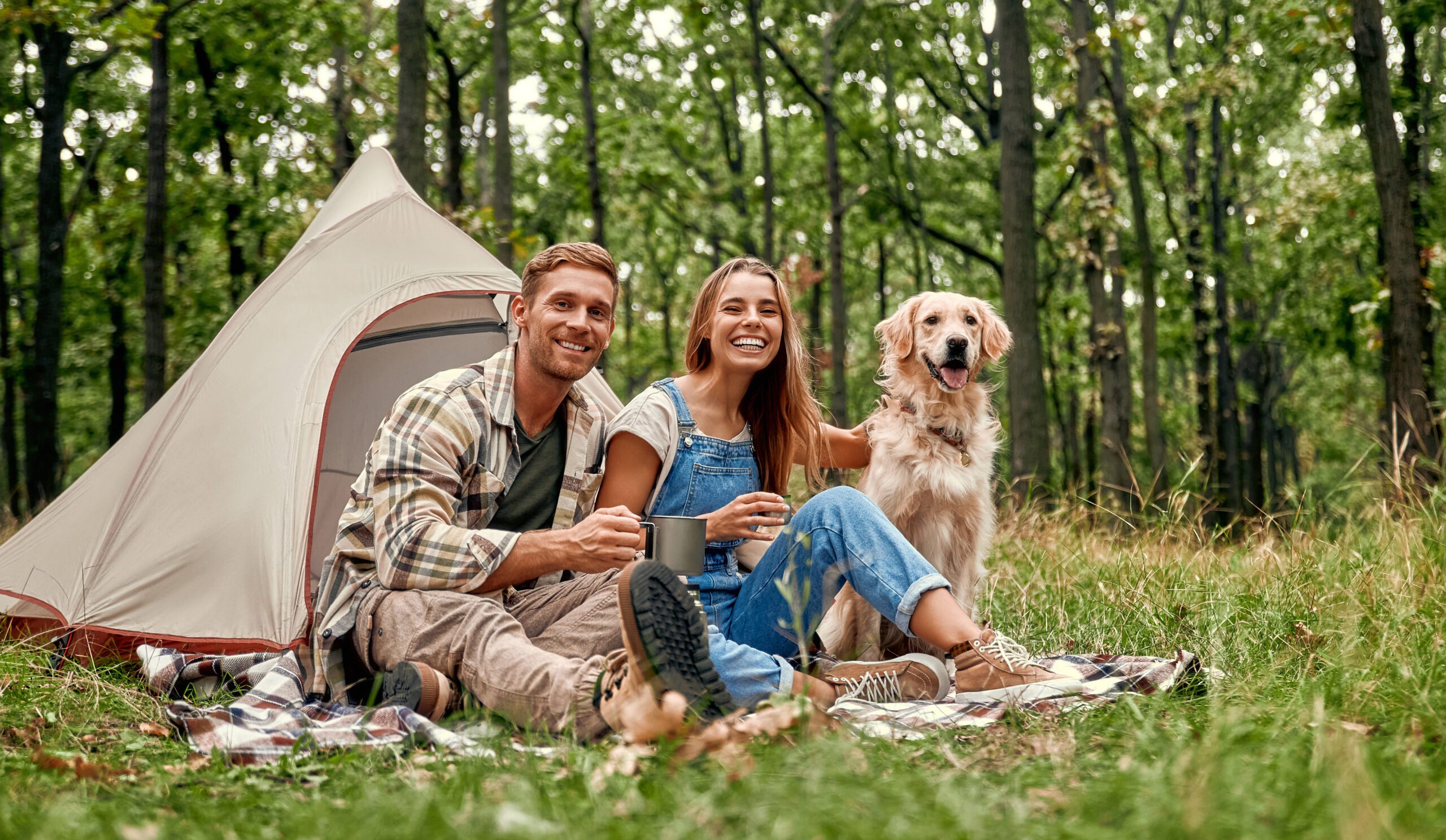
How To Camp With Pets
Camping with pets can be a fun and rewarding experience—if you’re prepared! Here’s a simple guide to help you camp safely and comfortably with your furry friend:
🐾 Before You Go
- Check Pet-Friendly Rules: Make sure your campground allows pets. Some have restrictions on pet size, breed, or number.
- Visit the Vet: Ensure your pet is healthy, vaccinated, and up-to-date on flea/tick prevention.
- Pack Their Essentials:
- Food & water (plus collapsible bowls)
- Leash, harness, and ID tags
- Pet bed or blanket
- Waste bags
- Toys and treats
- Medications
- Food & water (plus collapsible bowls)
🏕️ At the Campground
- Set Up a Pet Zone: Create a shaded, secure area with water and their bed or crate.
- Always Supervise: Never leave your pet alone, especially in a hot tent or car.
- Follow Leash Rules: Use a leash or tie-out to keep them safe and respectful of other campers.
- Be Considerate: Clean up after your pet and limit barking to maintain good campground etiquette.
🐶 Fun and Safety Tips
- Go for Walks or Hikes: Stick to pet-friendly trails and check their paws for burrs or hot spots.
- Watch for Wildlife: Keep your pet close—some animals can pose a danger.
- Night Safety: Use a glow collar or reflective gear for visibility.
- Hydration is Key: Make sure they drink enough, especially on hot days or after hikes.
🧭 Bonus Tips
- First-Time Campers: Try a backyard camp-out or a short overnight trip to ease into the experience.
- Camping in Tents? Introduce your pet to the tent at home so it feels familiar.
- Pet ID: Consider a GPS tag or microchip just in case your pet gets lost.
Camping with pets is all about preparation and awareness. With a little planning, you’ll both have an unforgettable adventure at Camp Lakewood Campground! 🏞️🐕🦺

🥖 Campfire Bread Rolls
Here’s a simple and delicious Campfire Bread Rolls recipe that you can make while camping:
(Stick Bread or Skillet Rolls)
Option 1: Stick Bread Rolls (Fun for Kids & Adults)
Ingredients:
- 2 cups all-purpose flour
- 2 tsp baking powder
- ½ tsp salt
- ¾ cup water (or milk)
- 2 tbsp oil or melted butter
- Optional: herbs, shredded cheese, or cinnamon sugar
Instructions:
- Mix Dough: In a bowl, mix the flour, baking powder, and salt. Add water and oil; mix until you get a soft dough. Knead lightly.
- Divide & Shape: Divide into golf ball-sized portions. Roll each into a rope about 12-18 inches long.
- Wrap on Stick: Wrap the dough rope around the end of a clean, thick stick (not too dry or it might burn).
- Cook Over Fire: Hold over hot coals (not direct flames), rotating frequently until golden brown and cooked through (8–15 minutes).
- Optional: Brush with butter, dip in jam, sprinkle with cinnamon sugar, or serve with savory spreads.
Option 2: Skillet Campfire Rolls (For a More Traditional Roll)
Ingredients:
- 1 tube of refrigerated biscuit or crescent dough or make your own simple dough (same as above)
- Butter or oil for greasing
- Cast iron skillet or Dutch oven
- Optional toppings: garlic butter, cheese, herbs
Instructions:
- Prep Skillet: Grease your skillet or Dutch oven well.
- Place Rolls: Arrange dough pieces (store-bought or homemade) with a bit of space between each to allow for rising.
- Cover & Cook: Cover with foil or a lid. Place over hot coals and cook for 10–20 minutes, checking often.
- Rotate & Flip: Rotate the skillet for even cooking. Flip rolls if needed for browning both sides.
- Finish & Serve: Brush with butter, sprinkle herbs or cheese, and serve hot.
🔥 Tips:
- Keep the fire low and steady—too much flame can burn the outside before the inside cooks.
- Make dough ahead at home and store in a cooler.
- These rolls go great with chili, stew, or roasted marshmallows for dessert!
Try these yummy bread rolls next time you stay at Camp Lakewood Campground!
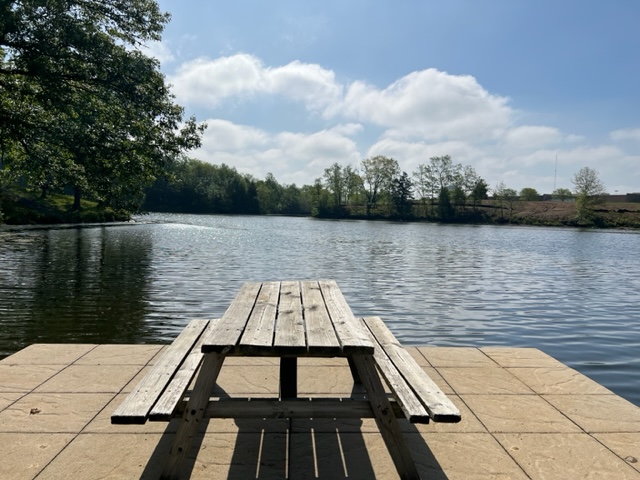
Things To Do When Staying At Camp Lakewood Campground
Here’s a simple checklist of things to do around Camp Lakewood Campground, including local restaurants with a short description for each:
🏕️ At the Campground
- Swim or Paddle on Lake Pauline
Enjoy swimming, kayaking, or fishing right from the shore or dock. - Campfire Time
Roast s’mores, share stories, or try glow stick tag at night. - Watch Wildlife
Look for deer, raccoons, birds, and other local critters. - Stargaze at Night
The sky is clear and dark—great for spotting constellations.
🌆 Nearby Attractions in Effingham
- The Cross at the Crossroads
A giant 198-foot cross—great photo op and landmark. - My Garage Museum
See vintage Corvettes and rare car memorabilia—perfect for car lovers. - TREC Trail
A scenic trail for walking or biking through nature and town. - Effingham Performance Center
Catch live music, comedy shows, or plays if there’s an event during your visit.
🍕 Local Restaurants to Try
- Firefly Grill (Upscale casual)
Farm-to-table dishes with a view of the lake—great for date nights or nicer meals. - Niemerg’s Steakhouse (Family favorite)
Known for hearty Midwestern meals and homemade pies. - Gabby Goat American Pub & Grill (Fun atmosphere)
Burgers, wings, and live music—good for groups or casual nights out. - Joe’s Pizza & Pasta (Local Italian classic)
Big portions, family-friendly, and a local favorite for pizza and pasta.
Whether you’re looking to relax by the lake, explore local attractions, or enjoy classic camping activities, Camp Lakewood Campground and the surrounding Effingham area offer something for every camper!
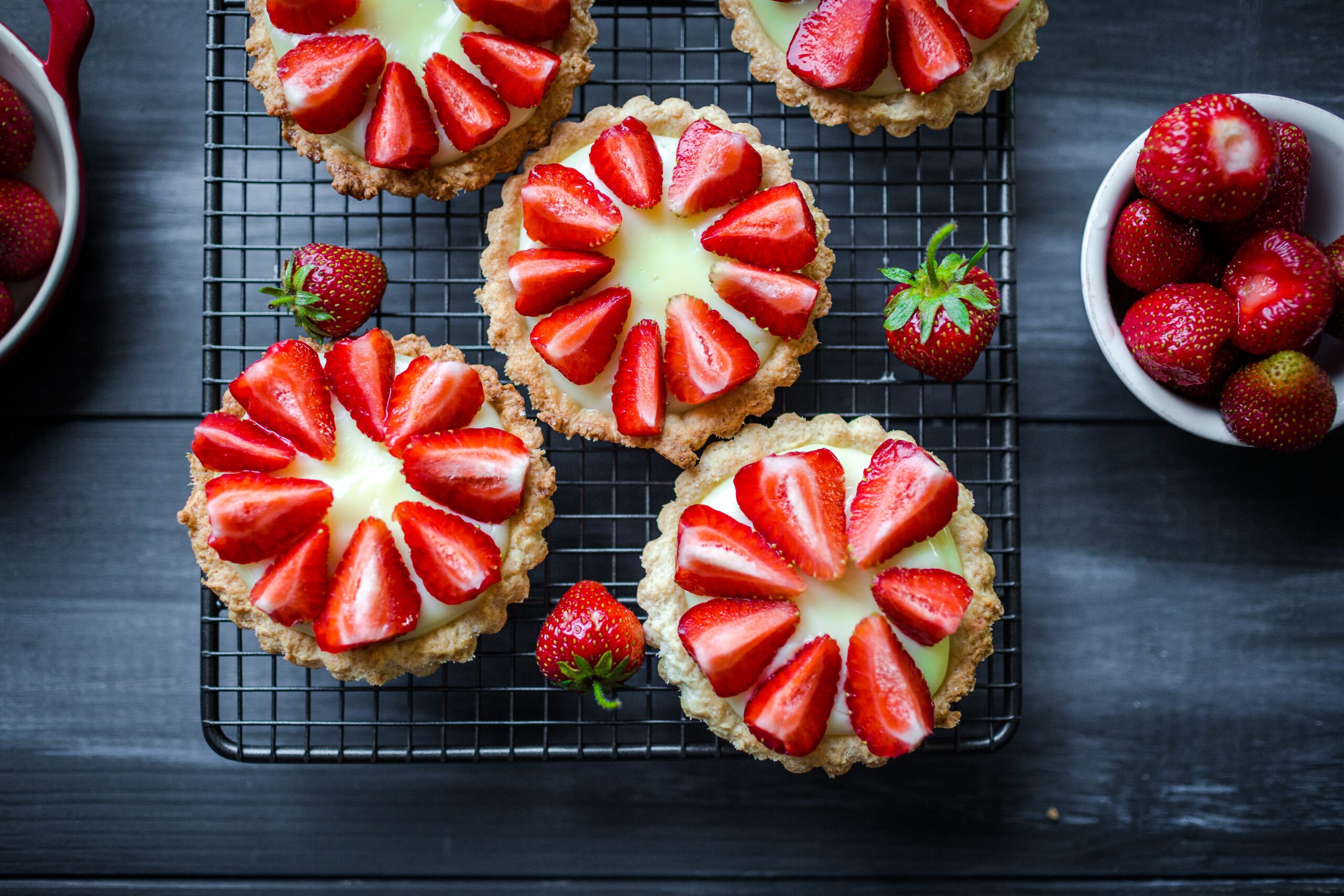
🍓 Strawberry Shortcake Recipe
Here’s a classic strawberry shortcake recipe that’s simple, delicious, and perfect for spring or summer camping trips!
Servings: 6
Prep Time: 20 minutes
Cook Time: 15 minutes
Total Time: 35 minutes
Ingredients
For the Strawberries:
- 1 lb fresh strawberries, hulled and sliced
- 1/4 cup granulated sugar
For the Shortcakes:
- 2 cups all-purpose flour
- 1/4 cup granulated sugar
- 1 tbsp baking powder
- 1/2 tsp salt
- 1/2 cup cold unsalted butter, cubed
- 2/3 cup whole milk (plus more if needed)
- 1 tsp vanilla extract
- 1 egg (optional, for brushing)
For the Whipped Cream:
- 1 cup heavy whipping cream
- 2 tbsp powdered sugar
- 1 tsp vanilla extract
Directions
- Prepare the Strawberries:
- In a bowl, toss sliced strawberries with 1/4 cup sugar.
- Let sit at room temperature for at least 20 minutes to macerate (juices will form).
- In a bowl, toss sliced strawberries with 1/4 cup sugar.
- Make the Shortcakes:
- Preheat oven to 425°F (220°C). Line a baking sheet with parchment paper.
- In a large bowl, whisk flour, sugar, baking powder, and salt.
- Cut in butter with a pastry cutter or fork until it resembles coarse crumbs.
- Add milk and vanilla. Stir gently just until dough comes together—don’t overmix.
- Drop dough by large spoonfuls (or shape into 6 round biscuits) onto baking sheet.
- Optional: Brush tops with a beaten egg for golden color.
- Bake for 12–15 minutes or until golden brown. Cool slightly.
- Preheat oven to 425°F (220°C). Line a baking sheet with parchment paper.
- Make the Whipped Cream:
- In a chilled bowl, beat cream, powdered sugar, and vanilla until soft peaks form.
- In a chilled bowl, beat cream, powdered sugar, and vanilla until soft peaks form.
- Assemble:
- Slice shortcakes in half horizontally.
- Spoon strawberries over the bottom half, add a generous dollop of whipped cream, then top with the other half of the shortcake.
- Optional: Add more strawberries and cream on top!
- Slice shortcakes in half horizontally.
Bring this refreshing sweet shortcake with you on your next camping trip to Camp Lakewood Campground!
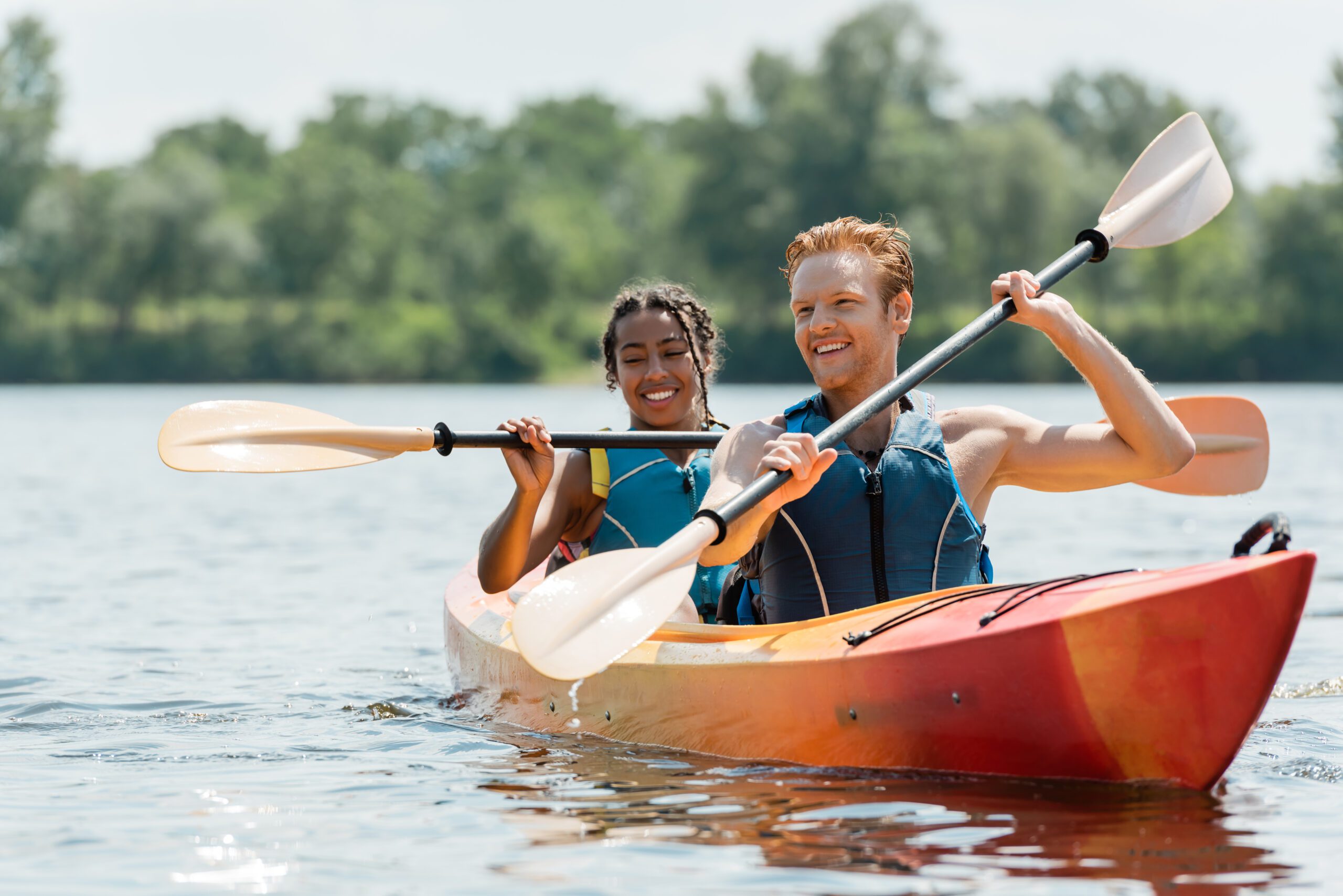
Best Outdoor Camping Activities
Here’s a list of the best outdoor camping activities that are fun for all ages and help you make the most of your time in nature:
🌲 Classic Nature Adventures
- Hiking – Explore nearby trails and get some exercise while enjoying scenic views.
- Fishing – Whether from shore or a boat, it’s peaceful and rewarding.
- Wildlife Watching – Bring binoculars and keep an eye out for birds, deer, raccoons, or whatever’s native to the area.
- Stargazing – With little light pollution, campgrounds are perfect for spotting constellations and shooting stars.
🔥 Campground Fun
- Campfire Cooking – Roast hot dogs, make s’mores, or try foil packet meals.
- Storytelling or Ghost Stories – Classic around the fire at night.
- Sing-Alongs or Acoustic Jam Sessions – If someone brings a guitar, even better.
- Glow Stick Tag – Especially fun for kids after dark.
🧭 Games & Challenges
- Scavenger Hunt – Create a list of things to find in nature.
- Capture the Flag – Great for big groups with open space.
- Cornhole, Ladder Toss, Frisbee – Easy-to-pack yard games.
- Geocaching – A modern treasure hunt using GPS.
🧘♀️ Relax & Recharge
- Hammock Lounging – Just chill and read a book or nap.
- Sketching or Photography – Nature is a perfect muse.
- Yoga or Meditation – A peaceful way to start or end the day.
🚣♂️ Water-Based Fun (if near a lake or river)
- Kayaking or Canoeing
- Swimming
- Skipping Stones
- Paddleboarding
Try any of these activities next time you stay at Camp Lakewood Campground or Salina Campground!
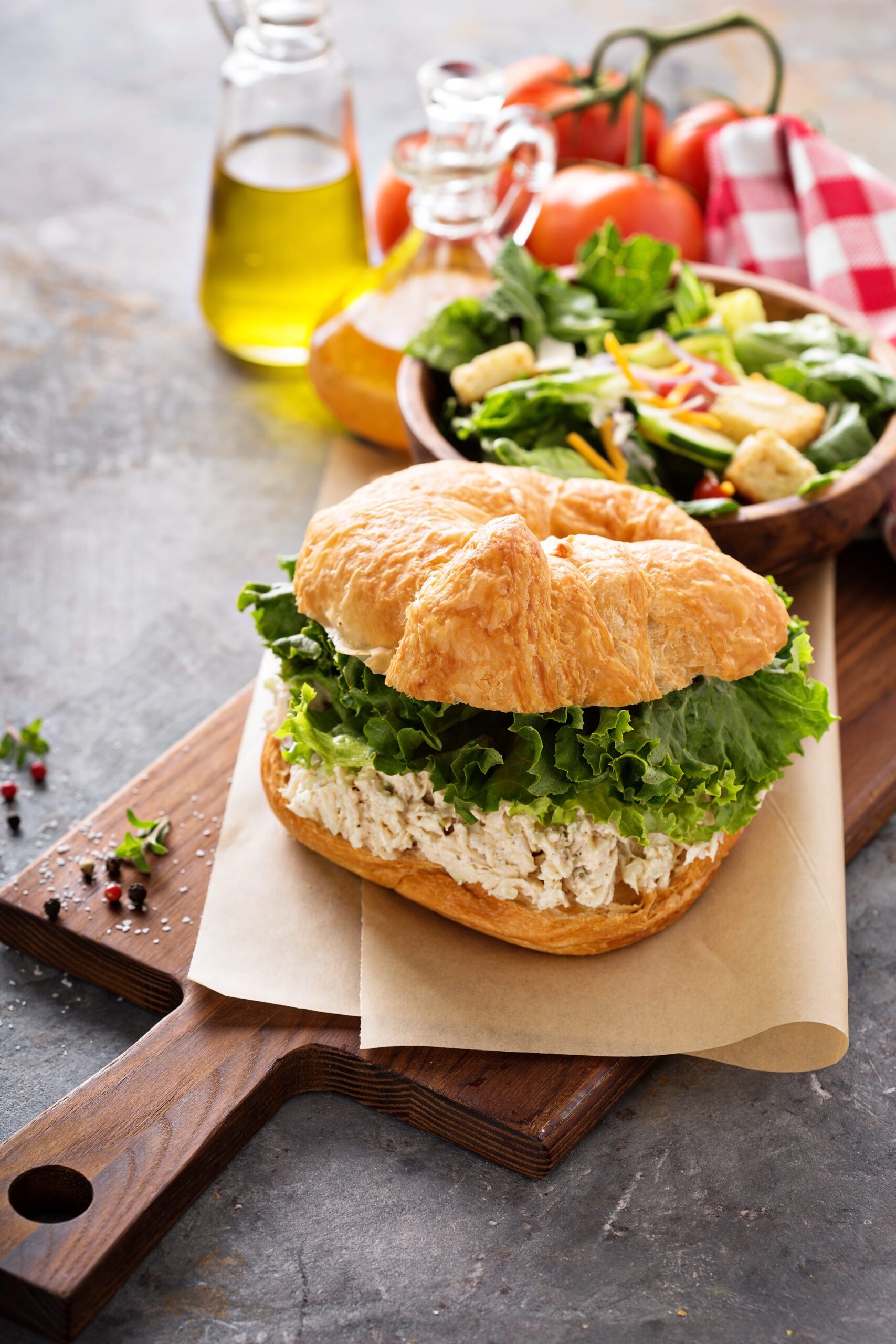
Chicken Salad Sandwiches
Here’s a simple and delicious Chicken Salad Sandwich recipe:
Ingredients
- 2 cups cooked chicken, shredded or chopped
- ½ cup mayonnaise (adjust to taste)
- 1 teaspoon Dijon mustard (optional)
- 1 celery stalk, finely chopped
- ¼ cup red onion, finely chopped
- ¼ cup grapes, halved (or dried cranberries for sweetness)
- ¼ cup chopped pecans or almonds (optional, for crunch)
- 1 teaspoon lemon juice
- Salt and black pepper, to taste
- 4 slices of bread, croissants, or sandwich rolls
- Lettuce leaves (optional)
Instructions
- In a large bowl, combine the chicken, mayonnaise, Dijon mustard, celery, red onion, grapes, nuts (if using), and lemon juice.
- Stir well until all ingredients are evenly coated.
- Season with salt and black pepper to taste.
- Chill in the refrigerator for about 15–30 minutes for the flavors to meld.
- Serve on bread, croissants, or sandwich rolls with lettuce for extra crunch.
Enjoy your homemade Chicken Salad Sandwich at Camp Lakewood Campground! 🥪
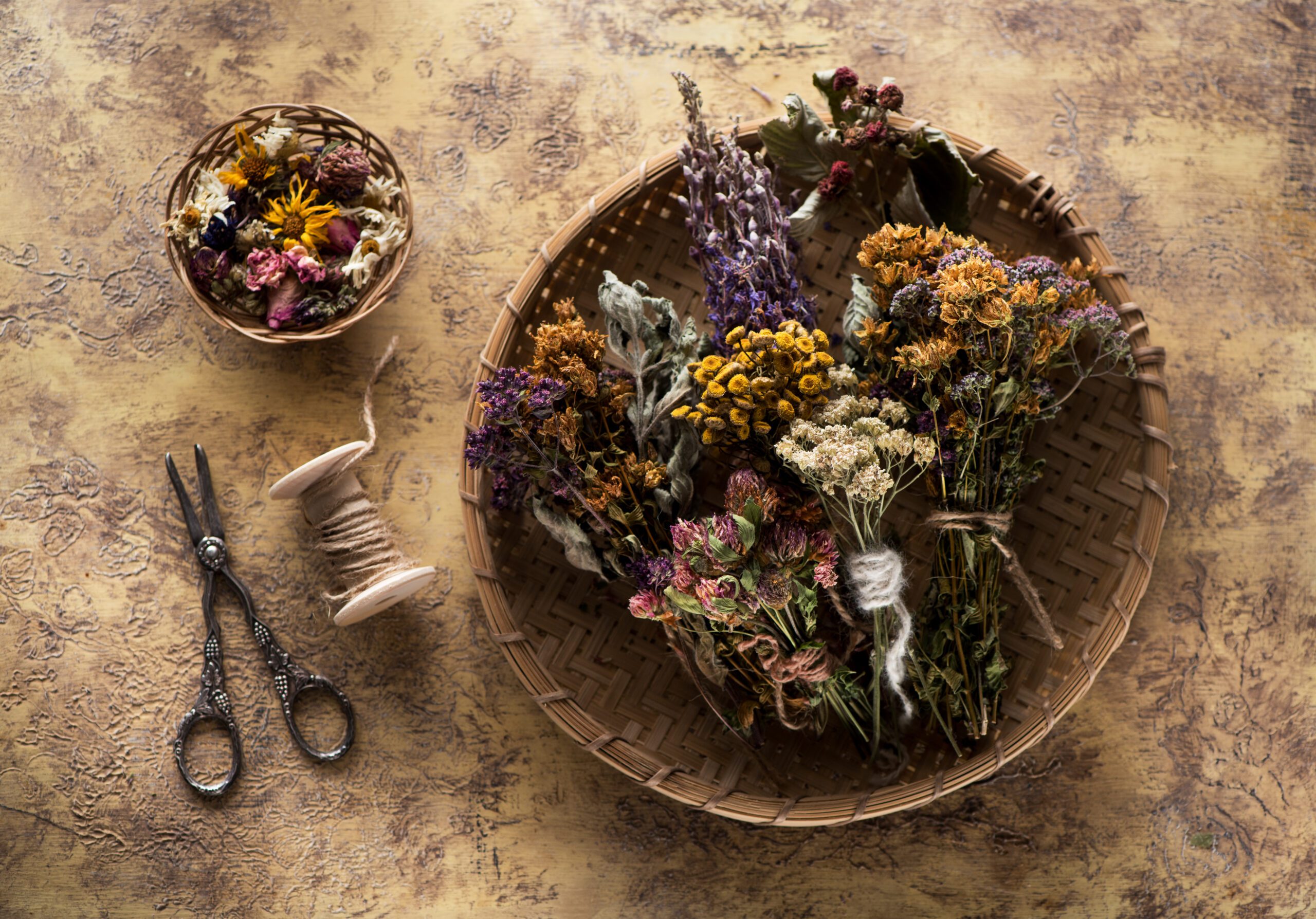
How to Preserve Things Found On Your Camping Trip
Preserving items from your camping trip depends on what you’ve collected—whether it’s plants, flowers, leaves, rocks, wildlife observations, or other natural keepsakes. Here are some tips for different types of finds:
1. Flowers & Leaves
- Pressing: Place leaves or flowers you want to preserve between wax paper inside a heavy book for 1-2 weeks.
- Laminating: Once dried, laminate for bookmarks or decorations.
- Resin Encasing: Embed in resin to create keychains, coasters, or jewelry.
2. Rocks & Minerals
- Cleaning: Wash with mild soap and water; scrub with a brush if needed.
- Sealing: Use a clear sealant or mineral oil to enhance colors.
- Labeling: Keep a small notebook or tag them with the location and date.
3. Pinecones, Bark, & Nuts
- Drying: Spread on newspaper and air-dry.
- Baking: Heat in an oven at 200°F for 30 minutes to kill pests.
- Sealing: Apply clear varnish to prevent decay and to preserve.
4. Feathers & Animal Findings (Non-Living)
- Cleaning: Soak in a mild bleach solution, then rinse and dry.
- Displaying: Frame or place in shadow boxes.
- Legal Considerations: Research laws about keeping feathers, bones, or shells, as some (like eagle feathers) are illegal to possess.
5. Photos & Journaling
- Photo Album: Print and organize your best shots.
- Scrapbooking: Combine pictures, notes, and small dried items in a scrapbook.
- Digital Memory Book: Create an online journal or blog post.
6. Wildlife Sightings
- Sketching: Draw animals or plants in a nature journal.
- Writing Notes: Record behaviors, habitats, and times of day.
- Apps: Use apps like iNaturalist to log observations without taking anything from nature.
Try this with your findings next time you stay at Camp Lakewood Campground!
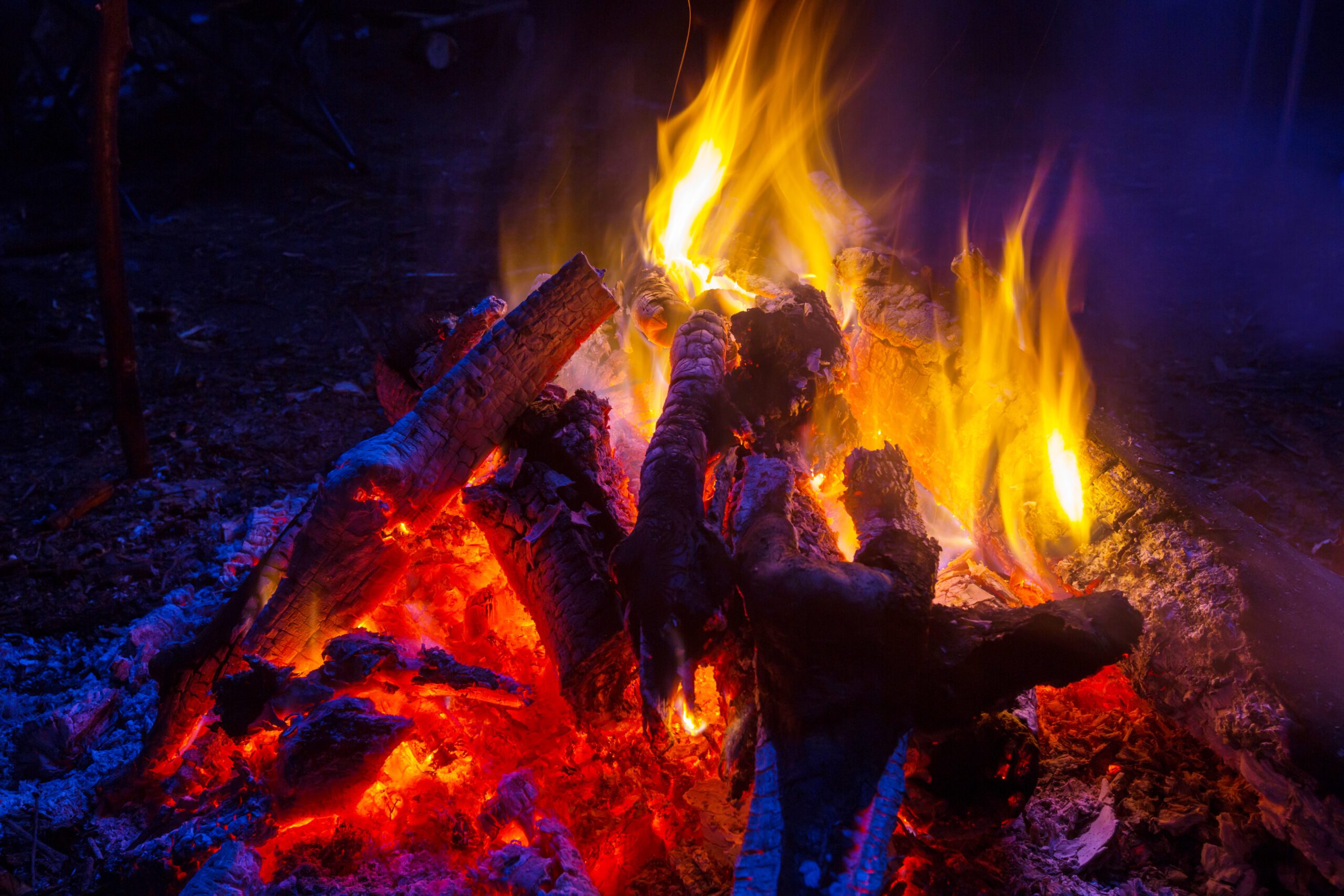
How to Make Your Campfire Last Longer
A cozy, long-lasting campfire is the heart of any camping trip, especially in the winter! Follow these tips to enjoy a warm glow all night long:
1. Pick the Right Firewood
- Hardwoods like oak and hickory, which burn longer and hotter, are ideal.
- Check for dry, seasoned wood to avoid smoky, inefficient fires. (Bonus: Our camp store might have firewood if you’re in need!)
2. Build Your Fire Like a Pro
- Try a log cabin or teepee style to encourage airflow and steady burning.
- Start with tinder and kindling, then add progressively larger logs.
3. Control the Flame
- Too much oxygen can burn wood too quickly, so stack logs thoughtfully.
- Keep the fire contained within the provided fire ring for both safety and efficiency.
4. Use Nature to Your Advantage
- Stack rocks or logs as a reflector wall behind your fire to direct heat back toward your campsite.
5. Feed It Slowly
- Avoid piling on large amounts of wood all at once. Gradually add logs to maintain a steady flame.
6. Bank Your Fire Before Bed
- Before you call it a night, gently rake the embers into a mound or cover them with ash. This preserves the heat and makes restarting your fire in the morning a breeze!
7. Consider Long-Burning Additions
- For extra-long nights, add a fire log or charcoal to supplement your wood.
8. Stay Safe and Enjoy
- Always monitor your fire and make sure it’s fully extinguished before leaving your campsite or turning in for the night.
Whether you’re roasting marshmallows or just soaking in the warmth, these tips will keep your campfire burning longer and make your nights at Camp Lakewood unforgettable! We offer firewood at our supplies store!
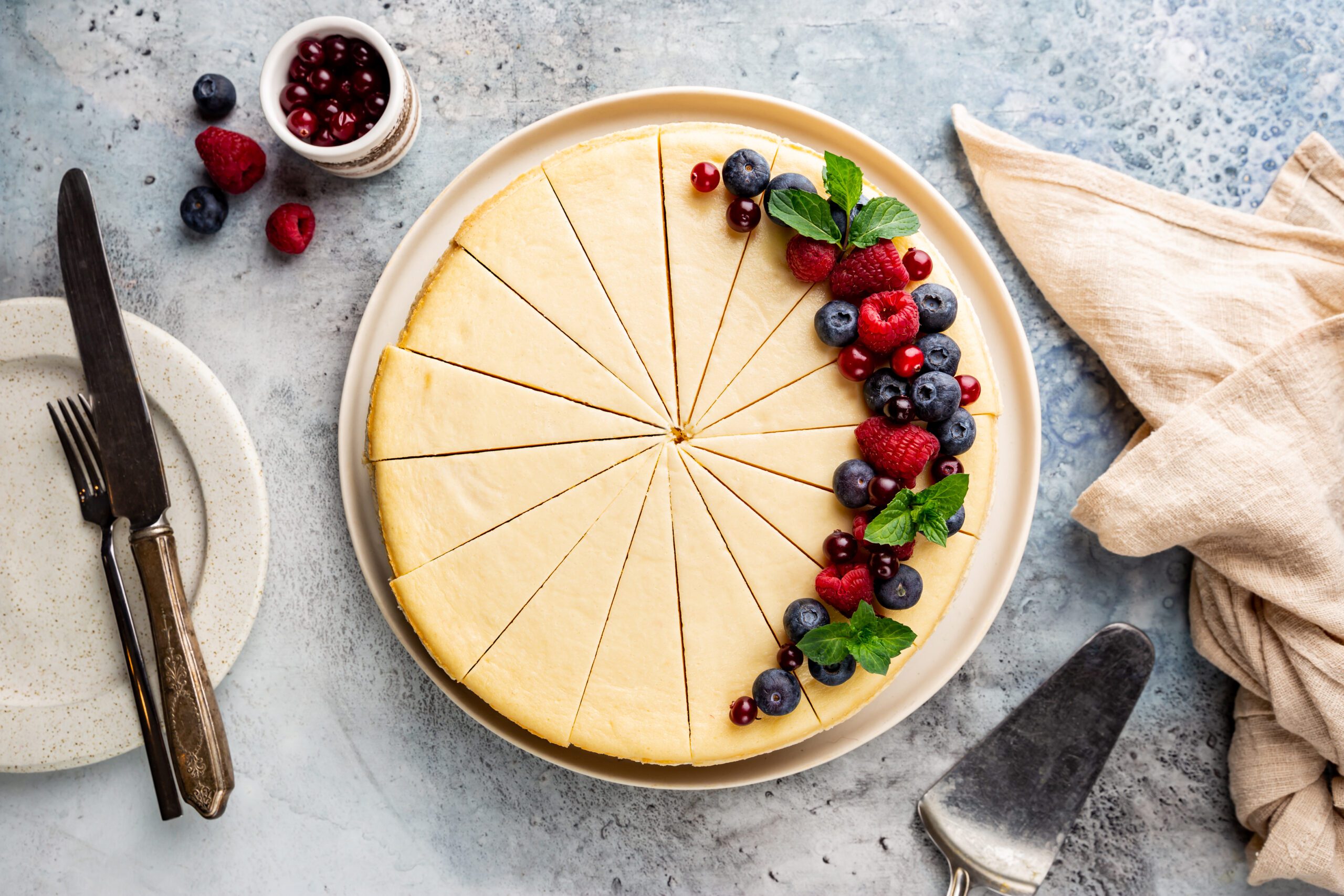
Protein Cheesecake Recipe
Here’s a simple and delicious Protein Cheesecake Recipe to satisfy your sweet tooth while staying on track with your fitness goals:
Ingredients
Crust (optional):
- 1 cup graham cracker crumbs (or almond flour for a lower-carb option)
- 2 tbsp coconut oil or unsalted butter, melted
- 1 tbsp sweetener (e.g., Stevia, monk fruit, or your choice)
Filling:
- 16 oz (450 g) fat-free or low-fat cream cheese (softened)
- 1 cup nonfat Greek yogurt
- 2 large eggs
- 1 scoop (30-40 g) vanilla or unflavored protein powder (whey or casein)
- 1/2 cup sweetener (adjust to taste)
- 1 tsp vanilla extract
- 1 tbsp lemon juice (optional, for a tangy flavor)
Toppings (optional):
- Fresh berries
- Sugar-free chocolate drizzle
- Light whipped cream
Instructions
- Prepare the Crust (optional):
- Preheat your oven to 325°F (165°C).
- Mix the crust ingredients in a bowl until combined. Press the mixture evenly into the bottom of a springform pan (7–9 inches) lined with parchment paper.
- Bake the crust for 8-10 minutes, then let it cool.
- Make the Filling:
- In a large mixing bowl, beat the cream cheese until smooth and creamy.
- Add Greek yogurt, sweetener, eggs, protein powder, vanilla extract, and lemon juice. Mix until well combined, avoiding over-mixing to prevent cracks.
- Bake the Cheesecake:
- Pour the filling over the crust (or directly into a greased pan if skipping the crust).
- Place the springform pan in a larger baking dish. Add hot water to the larger dish until it reaches halfway up the sides of the cheesecake pan (water bath method to prevent cracking).
- Bake for 40–50 minutes or until the edges are set, but the center is slightly jiggly.
- Cool and Chill:
- Turn off the oven and let the cheesecake cool inside for 30 minutes with the door slightly ajar.
- Remove from the oven and cool to room temperature before refrigerating for at least 4 hours (preferably overnight) to set.
- Serve and Enjoy:
- Slice, add your favorite toppings, and enjoy a high-protein treat!
Nutrition (per slice, assuming 8 slices, no toppings, crust made with almond flour):
- Calories: ~150–180
- Protein: ~15–20g
- Carbs: ~5–10g
- Fat: ~5–8g
Enjoy this healthy sweet treat at Camp Lakewood Campground!
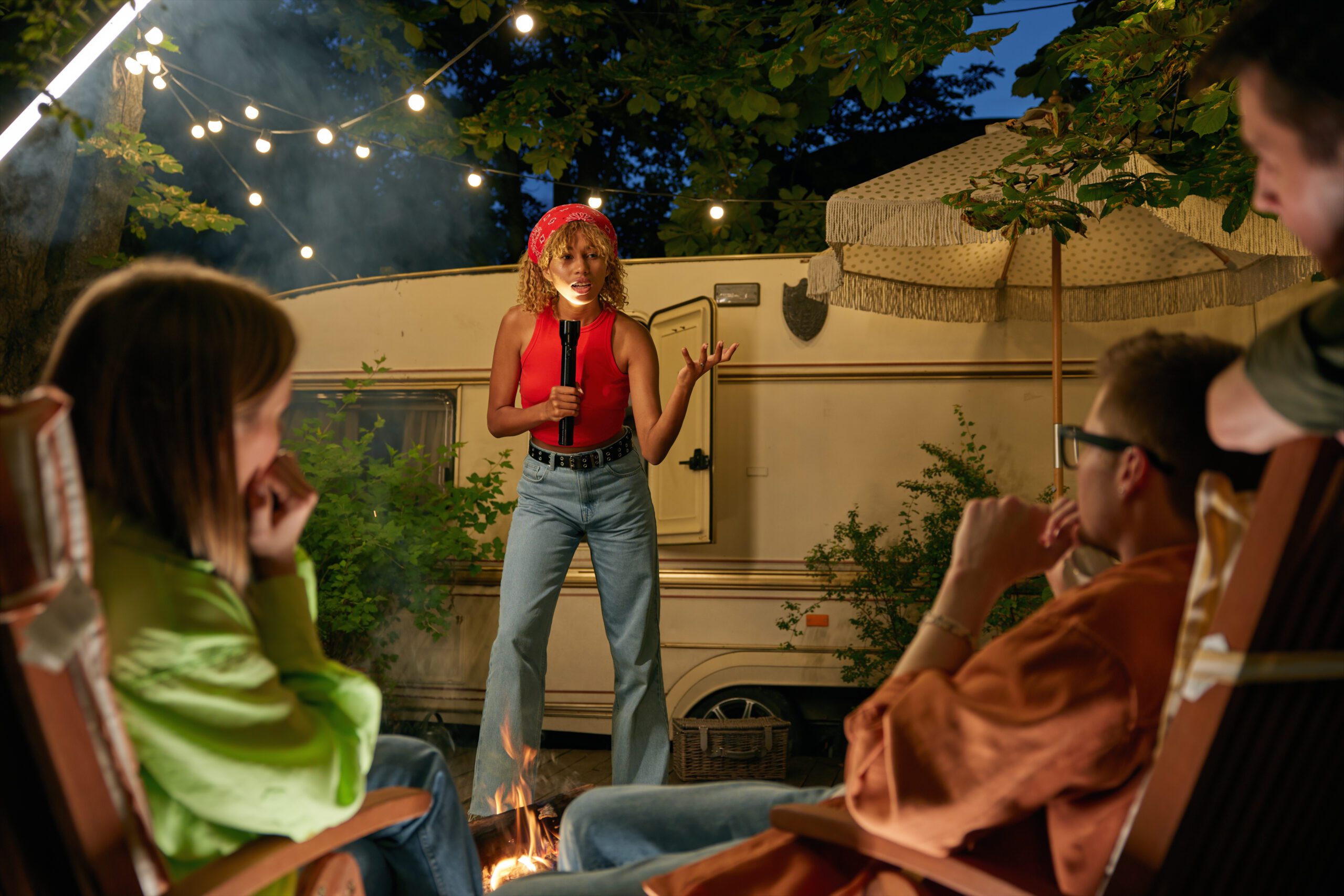
Themes for Camping to Make Your Adventures More Interesting!
There are lots of themes you can go with but here are a few ideas!
1. Stargazing Spectacle
What to Do:
- Bring a telescope or binoculars.
- Identify constellations and planets.
- Share space-themed stories or myths around the campfire.
Extras: Glow-in-the-dark decorations, star-shaped snacks.
2. Pioneer Adventure
What to Do:
- Embrace pioneer-style camping by building a DIY shelter.
- Cook food over an open fire.
- Teach basic survival skills like knot-tying or fire-starting.
Extras: Period costumes or props for fun photos.
3. Treasure Hunt
What to Do:
- Set up a scavenger or geocache hunt around the campsite.
- Use a pirate theme for added fun—maps, riddles, and “treasures.”
Extras: Small rewards or medals for participants.
4. Campfire Cook-Off
What to Do:
- Plan a cooking competition with campfire-friendly recipes.
- Judge dishes based on creativity, taste, and presentation.
Extras: Aprons, themed utensils, or trophies.
5. Nature Photographer’s Retreat
What to Do:
- Bring cameras or smartphones for a photography challenge.
- Focus on wildlife, landscapes, or macro shots of plants.
Extras: Create a mini-gallery of your best photos at camp.
6. Mystery at the Campsite
What to Do:
- Set up a murder mystery or escape room-style challenge.
- Create characters, clues, and puzzles for campers to solve.
Extras: Costumes and props to enhance the storyline.
7. Retro Campout
What to Do:
- Use retro gear like lanterns, plaid blankets, and tin mugs.
- Play classic outdoor games like horseshoes or sack races.
Extras: A playlist of oldies or sing-along campfire songs.
8. Wildlife Watchers Weekend
What to Do:
- Create a checklist of local animals and birds.
- Practice using binoculars or set up a wildlife camera.
Extras: A nature journal for everyone to record their sightings.
9. Camp Carnival
What to Do:
- Set up simple carnival-style games (ring toss, bean bag toss).
- Include activities like face painting or sack races.
Extras: Small prizes or snacks like popcorn and cotton candy.
10. Storytellers’ Circle
What to Do:
- Share spooky, funny, or inspiring stories around the campfire.
- Host a storytelling competition with different categories.
Extras: Use flashlights or props to enhance the atmosphere.
Try using these themes during your next stay at Camp Lakewood Campground!
Family owned and operated, Kiefer Campgrounds strive to offer you the best rates for a comfortable location with outstanding service, and spotless facilities. When you stay in one of our parks, you are no longer just a happy camper, but a part of our family! We are most certain you will enjoy your stay with us. Pick your favorite location and book your spot now before it’s too late! You’ll be happy you did!



